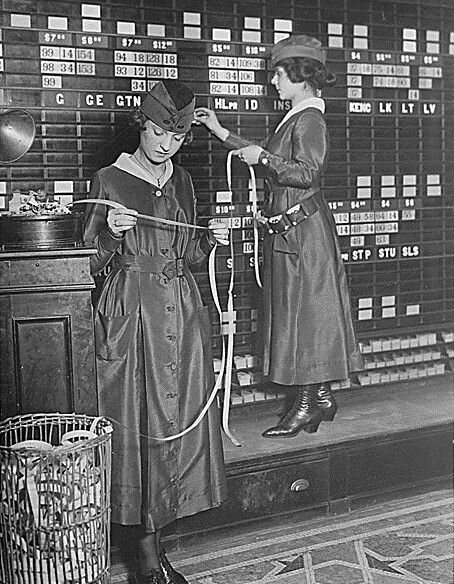![Examining stock prices in 1918 [Source: Wikipedia ]](https://fabbaloo.com/wp-content/uploads/2020/05/image-asset_img_5eb08b8502ffd.jpg)
Some analysts attempt to judge the health of the 3D printing industry by examining the state of publicly traded stocks.
This is not a good approach. It used to be, but is not the case anymore.
There are two kinds of companies involved in 3D printing: public and private.
Public and Private 3D Printing Companies
A public company’s share are traded on a stock exchange and the value of each stock floats based on supply and demand. If the public has less confidence in a company, its stock price will decrease, and vice-versa.
Public companies are obligated by law to disclose their financial information on a quarterly basis to prevent a rogue company from defrauding the public. This information is largely what public investors use to make investment decisions.
A private company’s shares are owned by a small set of investors. These investors could be a group of wealthy individuals, a single person, or private investment funds, or a combination of all. Private companies are not obligated to disclose their financial information, as the public does not need to know because they cannot invest.
Stock Price Analysis
Because publicly traded companies by definition are subject to public scrutiny, their stock prices become interesting. There are plenty of financial analysts and very serious investors that go to extreme lengths to decide on the value of a company and thus the stock prices are usually a good gauge on the company’s health.
One would think, therefore, that a survey of 3D printer company stock price trends might indicate the health of the industry as a whole.
That was indeed true some years ago.
3D Printer Stock History
In the 1980s when 3D printing was invented, the owners of the major processes founded companies that became giants, with Stratasys and 3D Systems the most notable from that group. The two companies also became public and began trading shares. But they also had to reveal their financial details to the public.
These companies were very successful for decades as the patents they owned for their respective processes allowed a temporary monopoly. They successfully exploited that capability, growing their companies into billion-dollar operations.
Initially there weren’t a lot of 3D printer companies, period. This is because of the patent monopolies allowed by the patent. Only after they began to expire did we see a small explosion of other 3D printing companies.
During and shortly after the initial patent period, however, one could indeed judge the health of the 3D printing industry by examining the stock prices of these two players, simply because their activities represented most of the action in the space.
Current 3D Printer Stock Price Analysis
Now, however, things are quite different. While these two companies and a scant few others do offer publicly traded shares, there are an increasing number of companies that are privately held, and they are scooping up a lot of the market. I’m talking about companies like Ultimaker, Desktop Metal, Carbon, and others who emerged after the patents began expiring.
As an increasing amount of business shifts to these private companies, the few stock prices available for monitoring no longer represent the state of the industry as a whole. They do represent the health of the separate companies, however.
In order to truly know what is happening overall, one would either have to somehow inspect the financials of the privately-held companies, which is highly unlikely, or collate the purchases of the customers, which is precisely what some of the analytic firms do.
In the meantime, I am increasingly skeptical of reports attempting to judge the health of the 3D printing industry through the value of a few stock prices that no longer represent the majority of activity.

